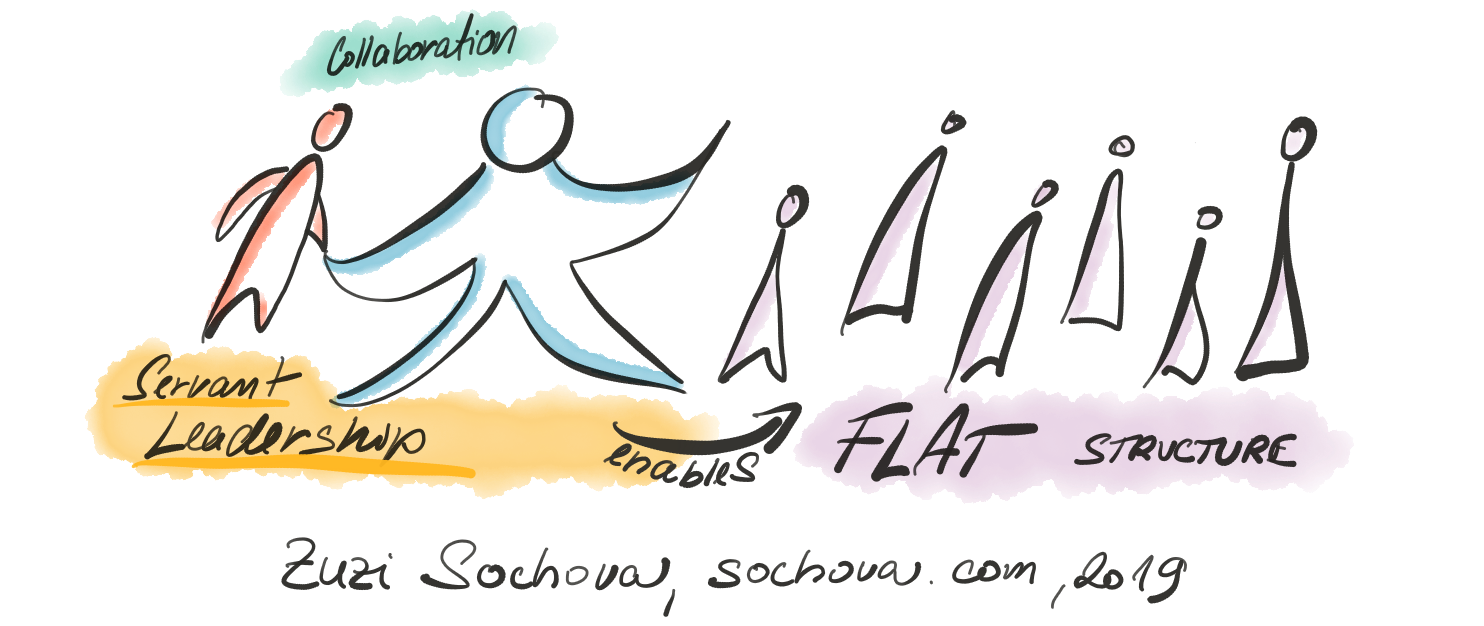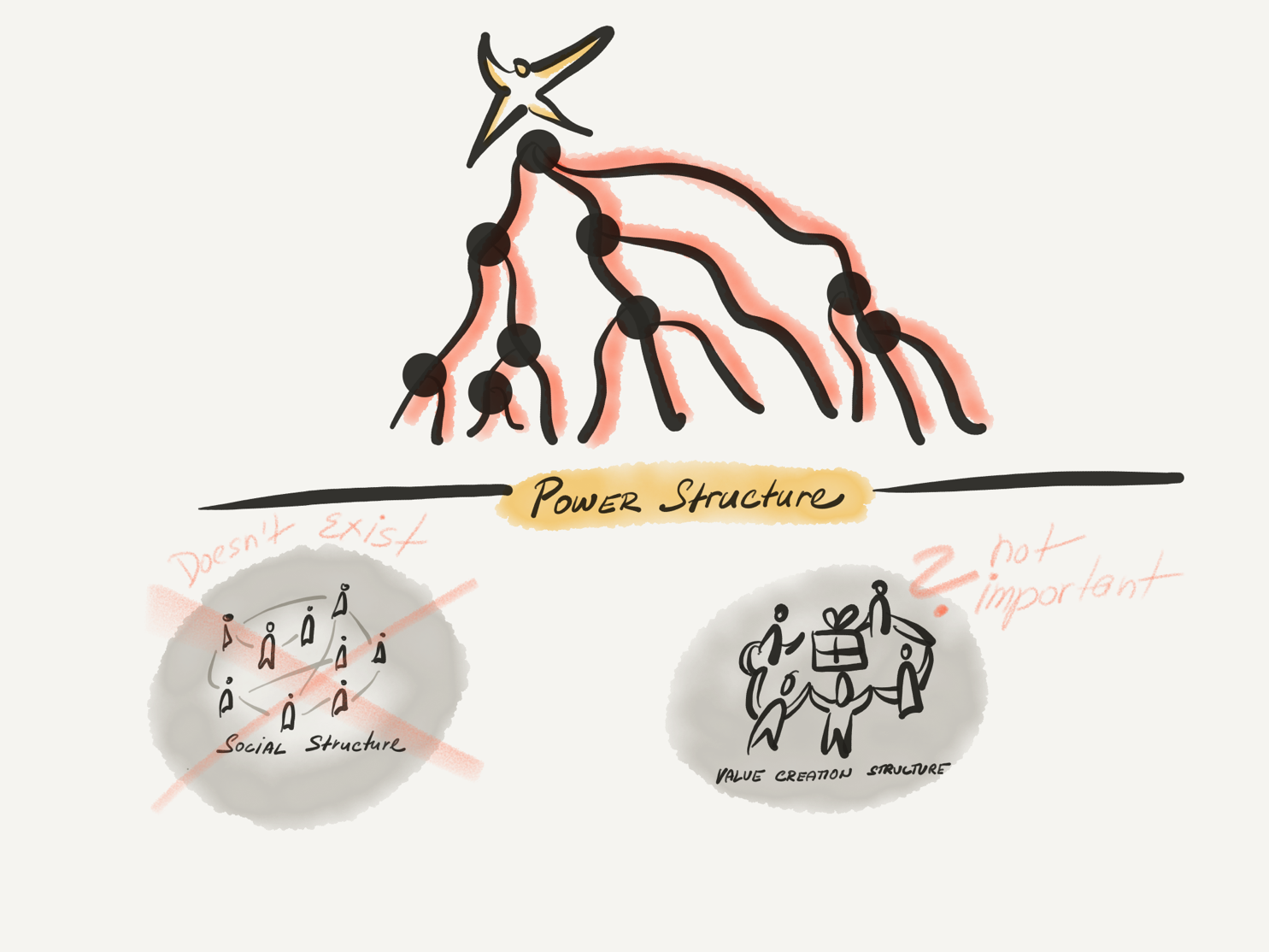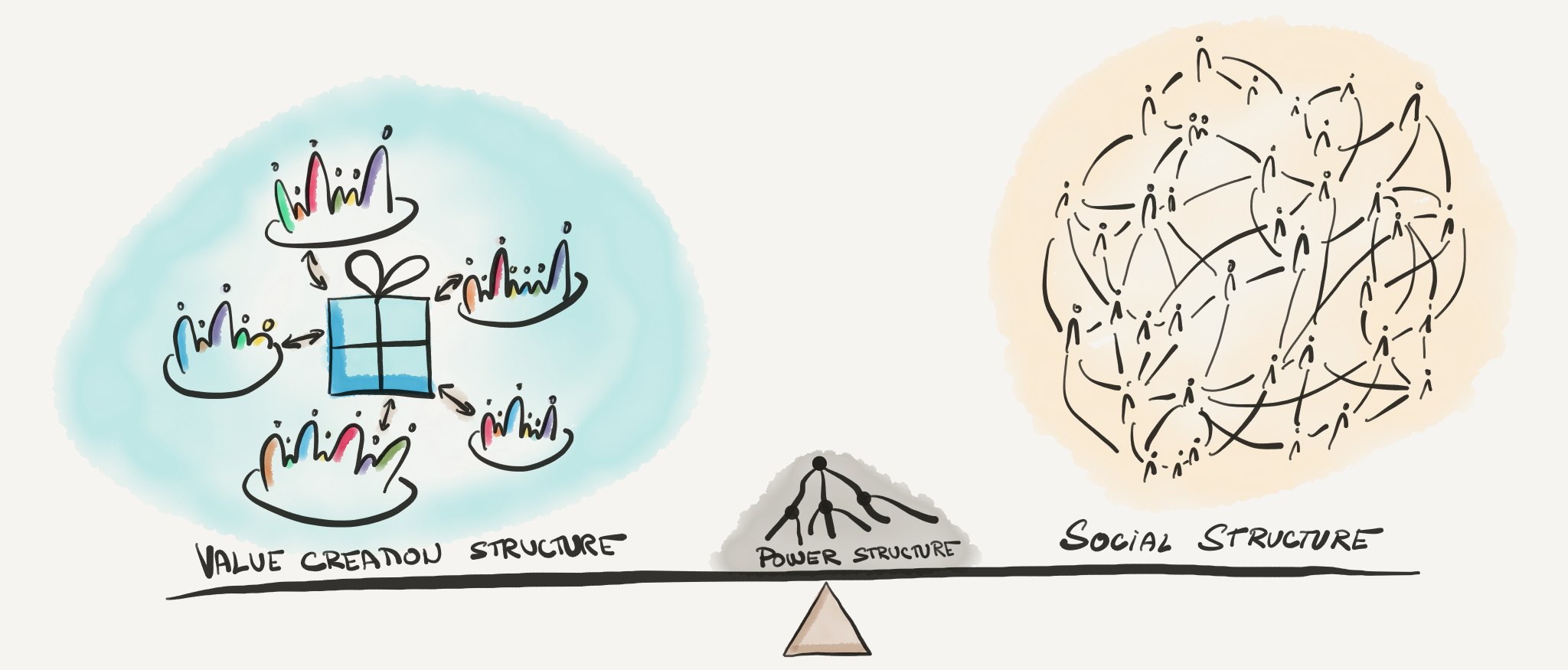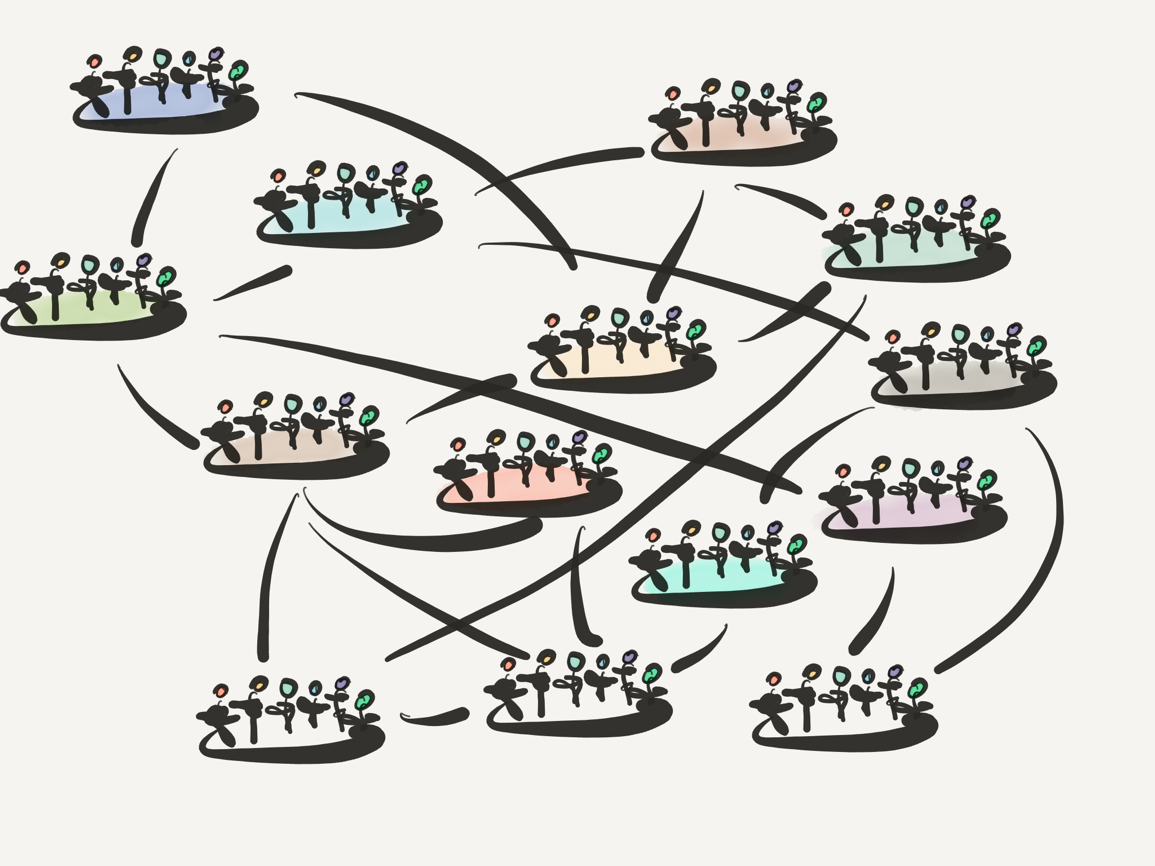Humanizing Business62
Flat Organizations
Zuzi Sochova
May 18, 2020
Zuzi Sochova
May 18, 2020
“Flat organizations are simple, flexible, and adaptive. They are the perfect answer for the VUCA challenges.”
 Author: Zuzi Sochova (sochova.com)The article is using fragments of the author’s soon to be published book Agile Leader.
Author: Zuzi Sochova (sochova.com)The article is using fragments of the author’s soon to be published book Agile Leader.
It took me many years before I started to understand what Agile is about--and I’m still on my journey! I started like most of you, by following a few frameworks and copying practices at the team level. We were lucky, as even such technical implementation resulted in a better way of working and we were able to inspect and adapt to find our own way of working. I learned how to apply agile principles at a larger scale... eventually, entire organizations! I have become more interested in culture, team dynamics, and organizational design. And, I must admit, this changed me as a person as well. 
Two years ago, the organization I was working with went on a journey to become an Agile organization and moved from a very hierarchical org chart to a flat design. They didn’t decide to go for it because somebody thought it was “cool” to be agile… but instead because it was the only way to deal with the VUCA (Volatility, Uncertainty, Complexity, and Ambiguity) challenges they were facing. It was not a simple decision, and two years later, they are still on their journey. Are they the perfect Agile organization? Not even close! But, they have made huge strides forward. The flat design has brought newfound transparency, empowerment, and responsibility; allowed us to respond significantly faster to VUCA challenges; and transformed us into a purpose-driven organization.
Ten years ago, I initiated a flat design for the first time at the biggest department in our organization. The Board thought I was crazy. I was facing thousands of doubtful questions: “Do you really mean no managers? But who is going to make the decisions? “Who is responsible for what?” Nevertheless, they were courageous enough to give it a try. I must admit I’m grateful for the attention they gave me by asking all these questions--they didn’t make it easy for me, but at the end of the day I felt they only made it difficult for me because they wanted to succeed. The organization was able to scale faster… in fact, we doubled our size in two years! We boosted employee engagement, addressed complexity and unpredictability more effectively, and increased the customer satisfaction level with our services. Those outcomes were measurable and visible to everyone. However, there was one additional outcome: a shift in mindset and culture. It changed all of us, and even people who left during the transformation eventually found themselves searching for jobs in similar organizational cultures.
Throughout history, the way we organize has constantly been evolving. Below are three organizational paradigms--each of them is a good fit for certain cultural moments.
An Agile leader exists in a different dimension than traditional management. It is not so much of a position, but rather a state of mind. Agile leaders do not create any hierarchy or have any given power. Their power grows by the value of their service to the organization. Agile leaders are able to inspire others, create and communicate an appealing vision, and work towards a higher purpose which motivates organization. They create cultures of collaboration, are good coaches, facilitators, and listeners.
Compared to the traditional organization, where leadership was mostly positional, Agile organizations rely more on emergent leadership. In other words, anyone can become a leader if he has a strong enough idea and courage to take over the ownership, and go for it! Emergent leadership is the key driving force for any self-organized environment. In a well-functioning Agile organization, leadership is spread around and decentralized. Leadership is no longer linked to any position. Instead, everyone can become a leader.
The core prerequisite for such leadership is radical transparency and frequent feedback. Anyone can come up with an idea, share it with everybody, and ask for feedback while people around them make sure the idea is worthy of pursuing. What makes this different than traditional leadership models is that the leaders don’t necessarily report to any manager, but to their colleagues and to some extent, the entire organization! The leadership is emergent. What doesn’t make any sense in a traditional organization starts to make sense at a small scale at the level of self-organizing teams, and finds its own world in flat agile organizational structures.

One of the leadership styles which is often mentioned in an Agile environment is a “servant leader.” It is a term created in the 1970s by Robert K. Greenleaf in “The Servant as Leader” essay [1]. It’s been revitalized in an Agile environment where the most common reference to the servant leader is regarding the ScrumMaster role [2]. Being a servant leader is the first step on the Agile leader journey. A servant leader is an enabler of the flat(-er) structure as it removes the hierarchy from leadership. As Partick Lencioni says: “My dream is that someday people won’t talk about servant leadership, because that will be the only type of leadership that exists” [3].
Agile leaders understand it’s not about them, but others. Creating an environment where everyone can grow is crucial:“the ultimate role of a leader is knowing when to step away and let someone else lead” [3]. If you are going to be consistent, and suppress the urge to take shortcuts while dealing with challenges, there is enough time to make them ready. Your goal is not to be efficient, neither tell, nor decide. It’s to garden the teams so they got used to taking over ownership and responsibility for organizational challenges without you taking care of that. After all, in VUCA world the collaborating teams are always better in finding optimal creative solutions than any individuals.
The most difficult shift for traditional management to become agile leaders is learning how to deal with teams instead of individuals, and how to collaborate and co-create together. In Agile organizations, everyone is a member of a team and most likely a community of practice as well. That makes things easier as everyone has experience with a self-organized team and with emergent leadership. The prerequisite for any team is that they have one goal, which derives from organizational purpose. Without a team spirit, there is no Agile. Every Agile journey shall start with defining strategic goals and forming teams around them.
If you are not there yet, getting communities or virtual teams working on initiatives to get experience with collaboration and emergent leadership is a good start. In a traditional structure, with departments and managers, the shift starts where you look at the managers as a team with a common goal (not as a group of individuals with their own goals). This is where the agility at the organizational level often starts making every manager part of two teams: the one they are leading and the second of his peers.

One of the most interesting shifts from the traditional structure to the team oriented structure I experienced did not occur at the development team level, but at the executive team level. In that organization, directors were power-hungry: the IT Director refused to order computers before new employees showed up on their first day, the Testing Director always had his people busy with ongoing projects so they couldn’t participate on cross-functional teams, and the Operations Director was trying to optimize processes for his assistant--even if that meant hundreds of extra hours for the employees. When anyone in the organization had a creative idea challenging the status quo, it was almost impossible to make it happen. We eventually narrowed down the executive team to four directors with a focus on relationships, improving trust, open communication, commitment, and accountability. It was amazing how fast we were able to react to creative and innovative ideas, run experiments, try emergent ideas, and support each other! It was fun, energizing, and most importantly, it was working.
The hierarchical power structure is not the only structure which exists in organizations. There is a social structure which is built on top of relationships and social interconnectedness, and value creation structure [4]. 
The organizations based on the power-oriented structures (Organization 1.0 and Organization 2.0) are simple to understand, manage, and operate. They simplify the decision-making process and responsibilities. They can also be efficient, if they are designed well. Their biggest disadvantage is they deal with lack of empowerment that often causes demotivation and disconnect of the employees from the value the organization is supposed to deliver. But more importantly, they lack the flexibility and creativity to deal with VUCA challenges. There is a saying that “complexity can only be addressed by adequate complexity.” As the world is changing and the problems companies are solving are becoming more and more in the complicated, the need for change is inevitable.
“Complex problems can only be addressed by complex structures.”
During your Agile journey, you’ll make the hierarchical power structure less important. The result? Organizations don’t fall into chaos, as they can still stick together based on the social and value creation structures which become much more important. Agile organizational transformations happen through radical decentralization of decision-making, and by descaling the organizational structure: “descaling the number of roles, dependencies, architectural complexity, management positions, sites, and a number of people” [5] as it is defined, for example, by the LeSS framework.

Agile frameworks are usually focused on strengthening the value creation structure. No matter how much focusing on the value structure is important, it’s not enough by itself--the social structure is equally as important! At the end of the day, it’s all about mindset. If you don’t focus on individuals and interactions, build great teams, and create an environment where people can collaborate freely, frameworks and methods are not going to mean much. That might be the hardest part of Agile--tools are handy as they help you not to get lost on a day-to-day basis, frameworks are helpful as they give you some boundaries, processes are useful as they give you predictability and common ground in the constantly changing world. However, by themselves, they are not enough. In order to be successful with Agile, the social structure needs to be supported as well.
“Being smart is only half the equation in a successful organization. Yet it somehow occupies almost all the time, energy, and attention of most leaders. The other half of the equation, the one that is largely neglected, is about being healthy.” [6]
Organizations spend way too much time on the “smart” side by focusing on strategy, marketing, finance, and technology, so that they have no capacity left to minimize politics, confusion, and turnover while focusing on high morale and productivity. “None of the leaders – even the most cynical ones – deny that their organizations would be transformed if they could achieve the characteristics of a healthy organization. Yet they almost always gravitate to the other side, retreating to the safe, measurable “smart” side of the equation.” [6]
 While working with individuals is important, it has only a limited effect on the organization: “What really improves a system as a whole is working not on the parts itself, but on the interactions between the parts.” [7] That is exactly where the Agile leadership effort should be focused. It’s what happens when people matter.
While working with individuals is important, it has only a limited effect on the organization: “What really improves a system as a whole is working not on the parts itself, but on the interactions between the parts.” [7] That is exactly where the Agile leadership effort should be focused. It’s what happens when people matter.
From such a perspective, the organization can be seen as a network of teams, where the lines are the key point of the focus: “You are not here to solve the issues for them, you are there to help them straighten their relationship so they can work towards the resolution.” [8]
Even though organizations look differently in the Agile space, they have some sort of structure--it’s just that the power structure is very limited and uninfluential. It’s not a surprise that most of the practices often used in an Agile organization are on the “Collaboration and Create” part of the Competing Values framework map (i.e. peer feedback, customer collaboration, rolling budgets, flexible scope, team interviews, flat structure, etc.), while most traditional organizations have their place on the Control and Compete space (Individual KPIs, performance reviews, positional power, fixed time and scope contracts, year budgets, defined career path, detailed position description, silo-based component teams, etc.).
I’ll give you a short example of what practices we implemented when we decided to shift to a more collaborative and creative culture. It all started by building true cross-functional teams. We had them already in another department of the organization, but never as a core principle. Some teams were more like groups of individuals, some were narrowed by functional silo… needless to say, the cross-functional team idea was pretty radical.
We decided to merge software testers, software developers, and hardware designers into one department called “Engineering.” To minimize the impact of the roles, we made positions more general (i.e Engineer instead of Software Developer or Tester). The individually working parts of our former organization (who previously had Team Leads) were challenging to transform, as team members were initially lacking motivation and reluctant to take over the responsibility as they didn’t trust the new way of working. The former team leads felt threatened by the change and showed various forms of resistance. In the end, they mostly found their way on the new team as experts running one of our communities (automated testing, tools, architecture, Java, etc. ).
Coaching was a critical aspect in our success as we also removed all the traditional KPIs and performance reviews (as those never worked in our dynamic environment anyway!), redesigned the salary structure to have a higher base, and built the entire performance review around radical transparency, peer feedback, and coaching for growth. We encouraged people to work as a team, and in the first few quarters had a small bonus tied to that. We discouraged infighting and competition and encouraged collaboration. Recruiting followed this culture shift. Instead of the multi-round formal interview process focused on technical skills, we did a behavior interview and tried to give candidates the opportunity to experience our culture, join the team for lunch, and see if there was a mutual fit.

Long story short, it was a journey. Such things take time. It was frustrating, and exhausting! Not everything went well. Nonetheless, if I were in the same situation again, I would do it all again--not because the organization becomes more successful in doing their business, but because of the energy the overall culture shift created in the people. They had a newfound enthusiasm, pride, and motivation. We didn’t follow any frameworks or models. We were fully value and culture-driven, and such change is worth all the troubles. We realized that in order to be ready for the VUCA challenges, we needed to become more creative and collaborative. We learned that the practices which we were used to are not that valuable with our new way of working anymore, and that we need to change most of them.
[1] R. Greenleaf, The Servant as Leader.
[2] Z. Sochova, The Great ScrumMaster: #ScrumMasterWay, Addison-Wesley Professional, 2017.
[3] P. Lencioni, "Patrick Lencioni: What’s Your Motive?," 13 Aug 2019. [Online]. Available: https://globalleadership.org/articles/leading-yourself/patrick-lencioni-whats-your-motive/. [Accessed 2020].
[4] N. Pflaeging, "Org Physics: The 3 faces of every company," 6 3 2017. [Online]. Available: https://medium.com/@NielsPflaeging/org-physics-the-3-faces-of-every-company-df16025f65f8.
[5] V. Grgić, "Descaling Organizations with LeSS," 8 5 2015. [Online]. Available: https://less.works/blog/2015/05/08/less-scaling-descaling-organizations-with-less.html.
[6] P. M. Lencioni, The Advantage: Why Organizational Health Trumps Everything Else In Business, Jossey-Bass, 2012.
[7] N. Pflaeging, Organize for Complexity, BetaCodex, 2014.
[8] Z. Sochova, "The Synergies Between Orsc™ Coaching And Agile Coaching," 2017. [Online]. Available: https://www.crrglobal.com/orsc-agile.html. [Accessed 2019].
[9] F. Laloux, Reinventing Organizations, Nelson Parker, 2014.
[10] D. Marquet, Turn the Ship Around!: A True Story of Turning Followers into Leaders, 2013.
Please subscribe and become a member to access the entire Business Agility Library without restriction.